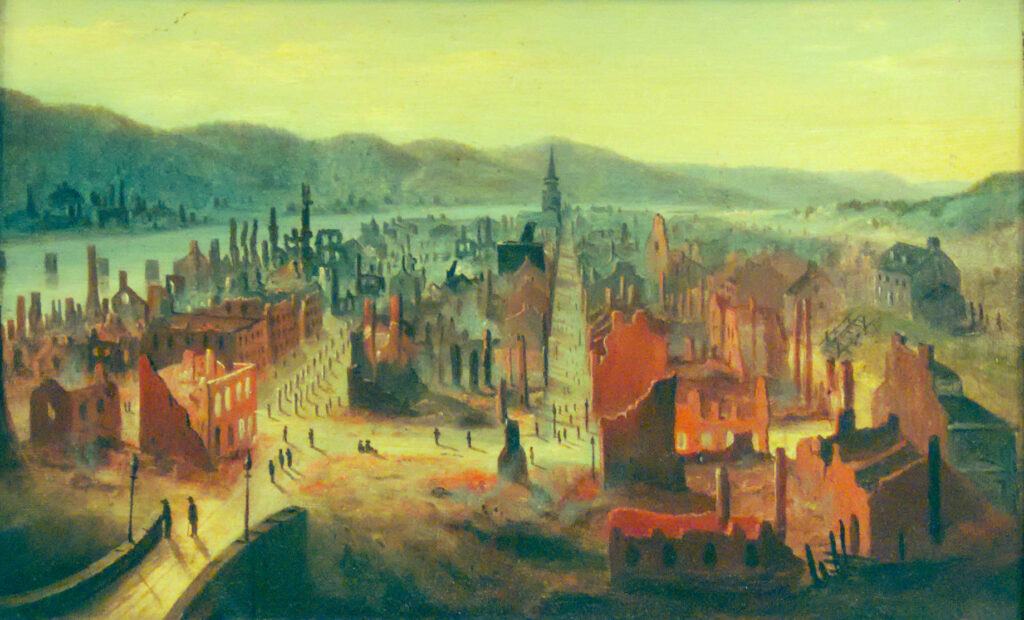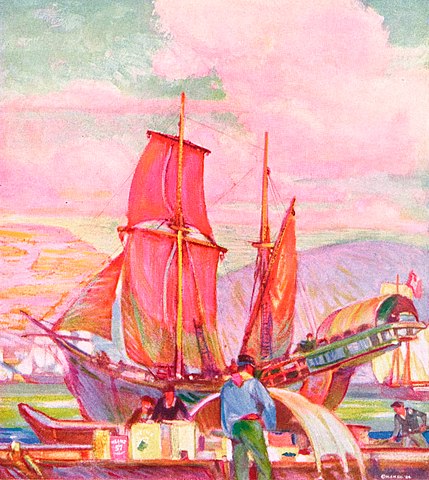
“Every year, on the 10th day of April, the fire-bells ring out the number 1-8-4-5, in memory of the baptism of fire that comes, sooner or later, to nearly every city. Like all great disasters of this kind, the origin was trifling. While the loyal but noisy fire-cracker decorates the historical shield of the fire department of Portland, Maine, and the combination of a kicking cow and a coal-oil lamp that of Chicago, the homely but useful wash-boiler stands as a reminder of the greatest disaster that has ever fallen on Pittsburgh. Early in the morning of the 10th of April, I845, an extra hot fire under a wash-boiler, in a poor tenement at the corner of Ferry street and Second street, now second avenue, started a fire which, for lack of water, was soon beyond the control of the fire department. A high wind carried the burning fire-brands over the different portions of the city, and in a few hours one-third of the geographical extent of the city and two-thirds of its value, was only a mass of charred cinders. The estimated loss was from six to eight million dollars, while twelve thousand people, most of whom had been in good circumstances, were rendered homeless. Fortunately but two persons lost their lives, one being Mr. Samuel Kingston, and the other Mrs. Malone. This was a severe blow to the business interests of the city, but with remarkable pluck the work of rebuilding was begun at once. The most liberal settlements were made by those having goods here on commission, generous aid was extended to the sufferers, and the city rallied rapidly from what otherwise would have been its death knell.”
—The Illustrated Guide and Handbook of Pittsburgh and Allegheny (1887), p. 20.
Comments









